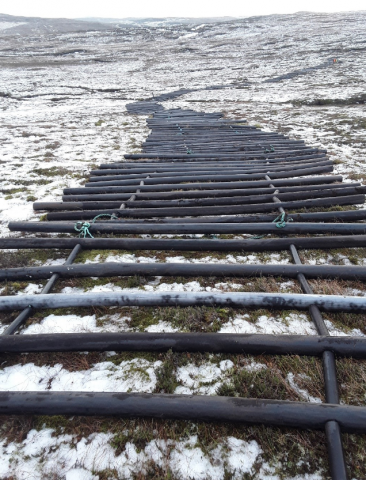By Sue White, Peatland ACTION Project Officer, Shetland Amenity Trust.
One of the biggest hurdles to implementing peatland restoration in Shetland has been getting out to the sites. Occasionally there are “peat roads”, rough tracks traditionally used to bring peats home from the hill, but generally the machines and fuel have to be taken some distance out across degraded blanket bog owned or managed by other crofters. And, as everyone familiar with peatlands will be aware, blanket bog quickly turns to a black peaty “mush” when repeatedly driven over, even when using tracked vehicles.
Faced with these challenging access issues - for a NatureScot Peatland ACTION funded peatland restoration project near Girlsta in the Shetland Central Mainland - one local contractor, Shetland Peatland Restoration Services (SPRS), has come up with an innovative solution that makes use of recycled materials from the local aquaculture industry. Salmon farm cage frames are constructed from a huge amount of sturdy black plastic pipe of various diameters and thickness. At the end of the lifetime of a cage this material ends up at the dump. SPRS have been using the pipes to construct mats which when laid out across the bog effectively form a sturdy floating “road”. The mats are light enough to be transported using a tracked quad and can be manoeuvred into place manually.

